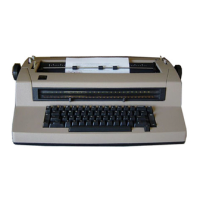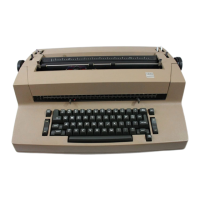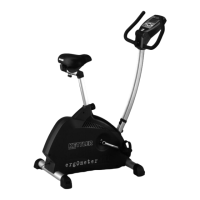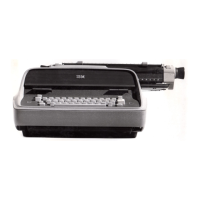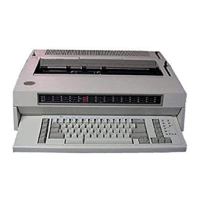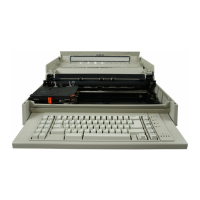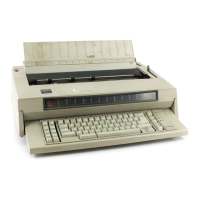OlSA
24.0
OlSA
There
are
times, because of customer requi rements,
or
other
considerations, when
on-line
service time
must
be
held
to a minimum.
Therefore,
the
need
wi
II
arise for 0
lSA.
Many
Cust-
omer Engineers have
replaced
a
Selectric
I/O
in a
system with a spare machine
and
have
then been faced
with a situation whereby
the
I/O
wi
II
apparently
per-
form
satisfactori
lyon
0 lSA but
wi
II
not
operate
"On
Line".
This Section
is
designed
to
illustrate
the
usefu Iness
and diagnostic
abilities
hidden within
the
OlSA.
Several
of
the main items
are:
1.
Using 0 lSA as an
exercizer.
2.
Diagnosing mechanical problems.
3.
OlSA
Servicing Aids for
the
Selectric
4.
Scopi
ng
procedures for 0
lSA
and
the
I/O.
In
order
to
use
OlSA
effectively,
obtain
as much
in-
formati on about
the
fai lure as possib
Ie.
1.
Befor~
the
Selectric
is
pulled
off
the
system,
be
sure
that
it
is
a
Selectric
problem.
2.
Use
every
available
moment
of
on-line
time
to
diagnose
the
symptoms.
3.
Endeavor to
duplicate
the
failure under known
conditions.
4.
Obtain
print-outs when
avai
lable,
showing the
Selectri c
mal-function.
5.
Use
error indications and
CE
test panels when
available
to
help you determine what
area
in
the
Selectric
might
be
causing
the
trouble.
6.
Ask,
especially
on keyboard machines
--
Does it
fail only on
output?
--
Does
it
fail only
on
in-
put?
--
Or,
has it
failed
both
on
output and
input?
7.
Listen
--
Does print
clutch
operation
sound
er-
rati c
rather
than rhythmi
c?
Is
the
machi ne
ex-
cessivey
noisy in one
area
or
during
anyone
op-
eration?
Does machine seem
to
be
slower in
per-
forming
anyone
operation
than
others?
If
you know:
1.
Under what conditions
the
fai lure
occurred.
2.
What
general
areas might have caused
the
fail-
ure.
3.
What symptoms
the
fai lure
caused.
Then you shou
Id
be
ab
Ie
to
use 0
lSA
to:
1.
Duplicate
the
conditions
that
brought
on
the
fai
lure.
2.
Pinpoint
the
fai ling mechanism or component .
3.
Know
when
the
malfunction has
been
eliminated.
OlSA
SERVICE
HINTS
25.0
OlSA
Service Hints
Refer
to
the 0 lSA Instructi
on/Reference
Ma'1ua I for
instructions on how to
connect
your
Selectric
I/O
to
OlSA.
25.1
HAND CYCLING
Turn
ET
motor
swi
tch off .
Set desired operation on function
switch.
Set desired
character
on ti
It
rotate
switch.
Push
Start.
Use
hana
cycle
wheel on
Selectric
I/O.
Assume your
printer
is
intermittently
failing
to
space.
Print escapement
is
okay,
so
the
trouble
is
in
the
op-
erational
area.
Set function switch to
print/space
and push start on
OlSA.
Every
other
machine
cycle
will
be
a
space
cycle.
Hand
cycle
the
Selectric
and observe:
1.
Space
magnet armature
pick.
2.
Space
interposer
unlatching
clearance
and
move-
ment
to
rear.
3.
Cycle
release arm
trips.
4.
Space
operational
latch
is
pu~hed
under
opera-
ti ona I cam fo \lower bai I.
5.
Space
'Clutch pawls drop into
ratchet
and cam
turns.
6.
Escapement torque bar pu
lis
escapement
paw
Is
from
rack.
7.
Carrier
moves one
space.
8.
Escapement trigger
re-Iatches
on escapement
torque bar
lever.
Any interruption in this
sequence
of
events
wi
II
cause
a fai lure
to
space.
25.2
S.H.
ONE
ARMATURE
TEST
Purpose:
Check
ability
of magnet assembly
to
trip
cycle
clutch
with only one print magnet
energized.
1 . Function Switch: Print
Alternate
Ti
It
and Rotate Print
T3
R%
Print
Alternate
Tl
R+5
On
print
cycles,
R-5 only will
be
energized.
On
print
alternate
cycles,
T-2 only will
be
energized.
2.
Function Switch: Print
Ti
It
and Rotate
T3
R+3
Each machine
cycle
only
the
R2A
armature will
be
energized.
4-29
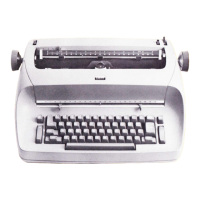
